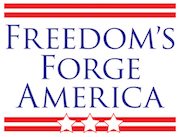The “Code Talkers”
The U.S. Marines recruited a select group of Navajo Indian men to assist with the radio and telephone transmission of sensitive tactical messages during their World War II battles in the Pacific. Called “Code Talkers” because the original 29 Navajos recruited and trained spoke a language that was difficult-to-impossible for the Japanese forces to ever translate, deemed, then, to be talking in in some form of mysterious “code,” one that proved impossible to crack, which was the whole idea!
The Navajo language, back then, was extremely difficult to learn if not a tribal member, was generally not written down, and usually only spoken, all of which made it particularly difficult for Japanese troops or spies to gather or comprehend. And to further insure that the enemy could not break-through the Navajo language, the original 29 developed code words, in effect seemingly “encrypting” their transmissions, adding another layer of difficulty for anyone picking up the Marine force transmissions in combat. In today’s terms, perhaps adding a “firewall” to further block comprehension for anyone other than a Navajo Marine.
Code examples were things, such as, rather than referring directly to a U.S. dive bomber, the Navajos would instead call it a “chicken hawk.” A fighter aircraft would be called a “humming bird.” And one of our battleships was a “whale.” If the Japanese had ever figured out the basic Navajo language, which they never did, that was only the first layer. Step two would have then been figuring out what the code words stood for!
Little referenced, our troops in World War I did use the languages of other tribes as code. It was concern about that, with the knowledge that Japanese “students” were in America between the wars studying those languages for planned comprehension, as intelligence insurance, should they be used again with any future hostilities. Given that realization, the Marines turned to the Navajo language, one that was much more difficult to understand, as mentioned above.
Originally, there were 29 Code Talkers. By war’s end, that number had grown to almost 400. In but one of the accolades bestowed upon them, Marine Corps Signal Officer, Major Howard Connor, working with the Code Talkers in battle, would later comment: “Were it not for the Navajos, the Marines would never have taken Iwo Jima.” What an amazing tribute, concerning that costly and key Pacific victory.
By 2014, all of the original 29 Code Talkers had passed away. And we continue to lose more of the others with each passing year, as we do with all of our remaining World War II veterans, most now well into their 90’s. The most recent to leave us was John Pinto. At the conclusion of his war-time service, Mr. Pinto went to college, earned his degree, and became a teacher. Mr. Pinto would go on to serve in the New Mexico State Senate for over 40-years. Appropriately, his district included the Navajo Nation.
The Navajo Code Talkers have become legendary, their war-time contributions vital to our eventual victory in the Pacific. The invaluable aid provided to our Marines in combat, by this unique group of courageous and loyal Americans, the pride of the Navajo Nation, will be forever remembered by fellow patriots and all serious students of our country’s war-time history.
ADDENDUM: One of the last, Navajo Code Talker William Tully Brown passed away this past Monday (6-3-19) in Arizona. He was 96-years-old. Three of these unique heroes have died since May 10th.
(Navajo Code Talker basic info & Major Connor quote via cia.gov; John Pinto’s passing via dailymail.com, Associated Press, 5-24-19; William Tully Brown passing via dailycaller.com, Associated Press, 6-3-19)

